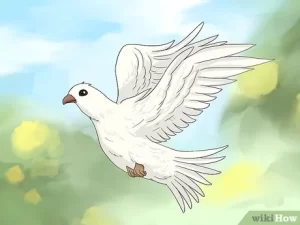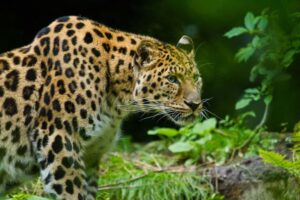
Definition of Game Animals
Game animals are typically categorized into two main groups:
- Big Game: Larger mammals that are hunted for sport and food, including deer, elk, bears, and moose.
- Small Game: Smaller animals that are often hunted for sport or as a food source, such as rabbits, squirrels, and game birds.
Game animals are usually distinguished from non-game animals, which are protected by law and cannot be hunted. The legal status of game animals varies by region, and regulations are often in place to ensure sustainable hunting practices.
Characteristics of Game Animals
1. Physical Traits
Game animals exhibit a variety of physical characteristics that can help identify them. Key traits include:
- Size: Game animals can range from small (e.g., rabbits) to large (e.g., moose). Size often correlates with their habitat and the type of predators they face.
- Coloration: Many game animals have coloration that provides camouflage in their natural habitats, helping them evade predators. For example, deer have brown coats that blend into forest environments.
- Body Shape: The body shape of game animals is often adapted to their lifestyle. For instance, animals like deer and elk have long legs for running, while bears have a more robust build for strength.
2. Behavioral Traits
Behavioral characteristics of game animals play a crucial role in their survival and hunting strategies:
- Feeding Habits: Game animals can be classified as herbivores (e.g., deer), carnivores (e.g., bears), or omnivores (e.g., raccoons). Their diet influences their habitat and behavior.
- Social Structure: Many game animals exhibit social behaviors. For example, deer often form herds, while predators like wolves hunt in packs.
- Reproductive Behavior: Game animals have specific mating seasons and rituals. For example, male deer engage in rutting behavior during mating season, which includes vocalizations and physical displays.
3. Habitat Preferences
Different game animals are adapted to specific habitats:
- Forests: Species like deer and bears thrive in forested areas where they can find food and shelter.
- Grasslands: Animals such as pronghorn antelope are adapted to open grasslands, where they can run fast to escape predators.
- Wetlands: Waterfowl, such as ducks and geese, prefer wetland habitats for nesting and feeding.
4. Ecological Roles
Game animals play vital roles in their ecosystems:
- Prey Species: Many game animals serve as prey for larger predators, contributing to the food web.
- Seed Dispersers: Herbivorous game animals help in seed dispersal, which promotes plant diversity and ecosystem health.
- Population Control: Hunting can help manage game animal populations, preventing overpopulation and habitat degradation.
Table of Common Game Animals
| Animal | Type | Habitat | Primary Diet | Hunting Season |
|---|---|---|---|---|
| White-tailed Deer | Big Game | Forests, Grasslands | Herbivore | Fall/Winter |
| Mule Deer | Big Game | Forests, Mountains | Herbivore | Fall/Winter |
| Elk | Big Game | Forests, Mountains | Herbivore | Fall/Winter |
| Pronghorn Antelope | Big Game | Grasslands | Herbivore | Fall |
| Eastern Cottontail | Small Game | Fields, Forest Edges | Herbivore | Year-round |
| Gray Squirrel | Small Game | Forests, Urban Areas | Omnivore | Fall/Winter |
| Wild Turkey | Small Game | Woodlands, Fields | Omnivore | Spring/Fall |
| American Woodcock | Small Game | Wetlands, Forests | Omnivore | Winter |
Hunting Regulations and Conservation
Legal Status
Game animals are subject to specific hunting regulations to ensure sustainable populations. These regulations may include:
- Hunting Seasons: Designated times of the year when hunting is permitted for specific species.
- Bag Limits: Restrictions on the number of animals a hunter can harvest in a season.
- Licensing Requirements: Hunters often need to obtain licenses or permits to hunt game animals legally.
Conservation Efforts
Conservation organizations work to protect game animal populations and their habitats. Key efforts include:
- Habitat Restoration: Improving and restoring habitats to support healthy populations of game animals.
- Research and Monitoring: Conducting studies to monitor populations and assess the impact of hunting.
- Education and Outreach: Providing information to hunters and the public about sustainable practices and the importance of conservation.
The Role of Hunters in Conservation
Hunters play a crucial role in wildlife conservation. Through licensing fees and taxes on hunting equipment, hunters contribute significantly to funding conservation programs. Additionally, responsible hunting practices help maintain balanced ecosystems by managing animal populations.
Challenges Facing Game Animals
Habitat Loss
Urbanization, agriculture, and deforestation lead to habitat loss for many game animals. This loss can result in decreased populations and increased human-wildlife conflicts.
Climate Change
Changing climate patterns affect the availability of food and suitable habitats for game animals. For example, altered precipitation patterns can impact the growth of vegetation that herbivores rely on.
Overhunting
While regulated hunting can be beneficial, overhunting can threaten game animal populations. It is crucial to adhere to regulations and practice sustainable hunting to prevent population declines.
FAQ Section
What defines a game animal?
Game animals are species that can be legally hunted for sport, food, or population control, including both big game (e.g., deer) and small game (e.g., rabbits).
What are the primary characteristics of game animals?
Game animals are characterized by their physical traits (size, coloration, body shape), behavioral traits (feeding habits, social structure), habitat preferences, and ecological roles.
How are game animals managed and conserved?
Game animals are managed through hunting regulations, including designated hunting seasons, bag limits, and licensing requirements. Conservation efforts focus on habitat restoration, research, and public education.
Why is hunting important for conservation?
Hunting contributes to conservation funding through licensing fees and taxes on hunting equipment. Responsible hunting practices help manage wildlife populations and maintain ecological balance.
What challenges do game animals face today?
Game animals face challenges such as habitat loss, climate change, and overhunting, which can threaten their populations and ecosystems.For more information on game animals, you can visit the Wikipedia page on Game Animals. This comprehensive overview of game animals highlights their characteristics, ecological roles, and the importance of sustainable hunting practices. Understanding these aspects is essential for promoting wildlife conservation and ensuring healthy ecosystems for future generations.


